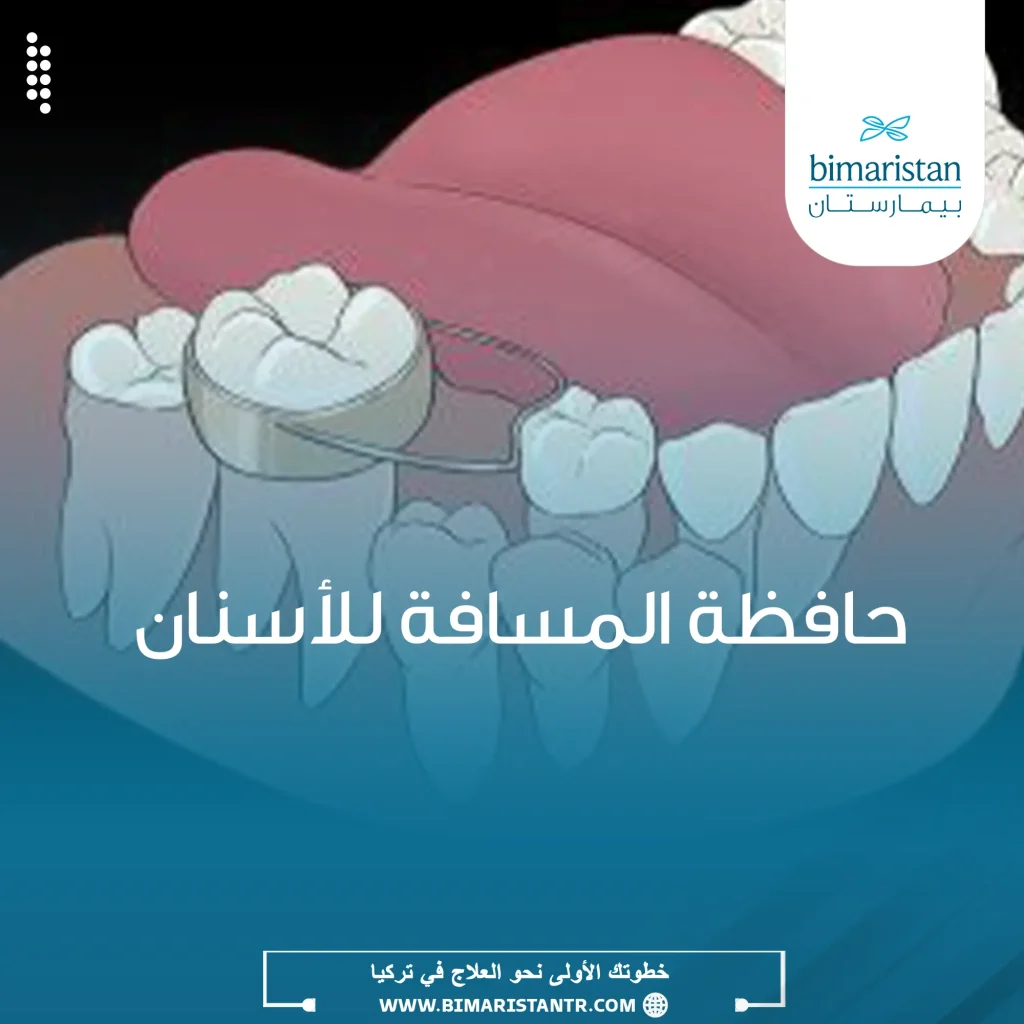حافظة المسافة للأسنان هي جهاز وقائي يمنع تحرك أسنان الطفل باتجاه الفراغ الذي تركته الأسنان التي سقطت قبل أوانها مما يحميه من المشكلات التقويمية فيما بعد.
تعد المسافات بين الأسنان عند الأطفال مسألة مهمة يجب على الآباء الانتباه إليها، بشكل خاص للأطفال الذين فقدوا أسنانهم بسبب التسوس أو الإصابات أو القلع المبكر، حافظة المسافة للأسنان هي حل ضروري لهذه المشاكل.
فعند فقد السن المؤقت بشكل مبكر يساعد تركيب حافظة المسافة للأسنان على ضمان الحفاظ على مساحة كافية لحين بزوغ أسنان الطفل الدائمة بشكل صحيح وفي الموضع الصحيح.
ولكن كيف تساعد حافظة المسافة للأسنان في تصحيح تباعد الأسنان عند الأطفال؟ وماهي المخاطر والفوائد المحتملة المرتبطة بهذا العلاج؟ سنتعرف على الإجابات من خلال المقال.
ما هي حافظة المسافة للأسنان؟
يسمى مصطلح حافظة المسافة للأسنان teeth space maintainer على أجهزة صغيرة تصنع للأطفال عند سقوط أسنانهم المؤقتة اللبنية في عمر مبكر ولم يحن وقت بزوغ الأسنان الدائمة لديهم وبالتالي الغرض منها منع الأسنان المجاورة المتبقية ﻓﻲ الفك من التحرك باتجاه مكان الخلع للحفاظ على المساحة اللازمة للأسنان الدائمة حتى تنمو فيها حين يحين وقتها.
حيث تتحمل أسنان طفلك اللبنية بعض المهمات الكبيرة، فهي تساعد على الحصول على التغذية المناسبة من خلال العض والمضغ إضافة للتحدث بشكل صحيح وكذلك في توجيه الأسنان الدائمة الموجودة تحتها إلى مكانها الصحيح حين تنمو.
إذا فقد طفلك أحد أسنانه نتيجة إصابة أو عدوى أو بسبب ضرورة الخلع فقد يتم فقدان معظم المسافة بين الأسنان مما يسبب مشاكل حركة أو ازدحام الأسنان أو اعوجاجها وذلك لأن الأسنان على جانبي مكان الخلع ستبدأ في التحرك إلى الفراغ فلا يتبقى مكان للسن الدائمة.
باستخدام حافظة المسافة للأسنان الوقائية يمنع حدوث ذلك وتحافظ على الفراغ بين الأسنان.
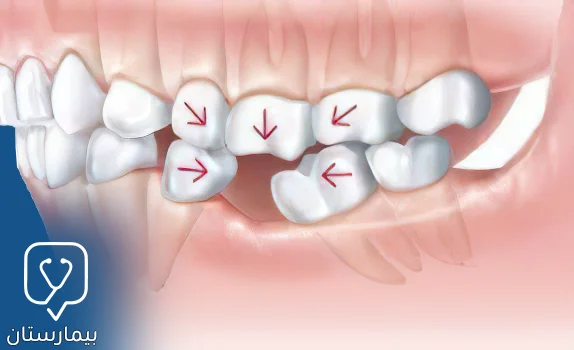
تعتبر مراقبة حالة فم طفلك أثناء مرحلة الأسنان المختلطة أي عندما تكون الأسنان اللبنية والدائمة موجودة في الفم أمراً بالغ الأهمية ترقباً لأي من مشاكل عدم المحاذاة والإطباق أثناء خلال هذه المرحلة.
كيف تبدو حافظة المسافة للأسنان؟
يتم صنع وتطبيق جهاز حافظ للمسافة بشكل مخصص من مادة الأكريليك أو المعدن، تشبه بعض أنواعه أجهزة التثبيت المستخدمة بعد تقويم الأسنان، يوضع على بعضها أربطة مطاطية أو نوابض معدنية، ويوجد منها ما يوضع ثابتاً أو تأتي بشكل أجهزة قابلة للإزالة.
سيوصي طبيب الأسنان بنوع الحافظة الأنسب لطفلك، إذا كانت الأسنان المفقودة تقع في المنطقة الأمامية من الفم فإنه ممكن أن يستخدم جهاز حافظ المسافة الطبي مع أسنان صناعية لملء الفراغات بالإضافة لتحسين شكل ونطق الطفل، ناقش الخيارات مع طبيبك.
أنواع أجهزة حافظات المسافة
تقسم حافظة المسافة للأسنان إلى ثلاث فئات:
حافظ مسافة ثابت أحادي الجانب
يحافظ على مسافات ضمن الجانب الواحد فقط من الفم يقوم الطبيب تثبيته فيه. تشمل الأجهزة الشائعة حافظ مسافة ذو الطوق والعروة وحافظ مسافة ذو ضابط وحشي، ويتم لصقها لتبقى ثابتة في مكانها.
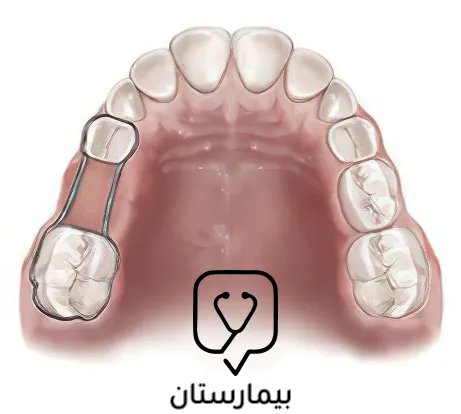
حافظ مسافة ثابت ثنائي الجانب
تشمل الفئة الثانية من أجهزة حفظ المسافات الأجهزة الثنائية الثابتة، يُستخدم نوع حافظ المسافة الثنائي في حالات خلع الأسنان اللبنية من كلا جانبي الفك.
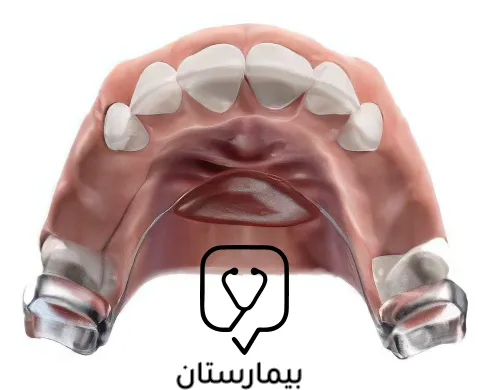
حافظ مسافة قابل للإزالة
هو جهاز للحفاظ على المسافات بعد خلع السن اللبنية يتميز بأنه يأتي معه أسنان صناعية مرتبطة، ويتم وضع هذا النوع من الحافظات المتحركة من أجل التجميل خاصةً عند قلع الأسنان الأمامية بالإضافة إلى المحافظة على النطق.
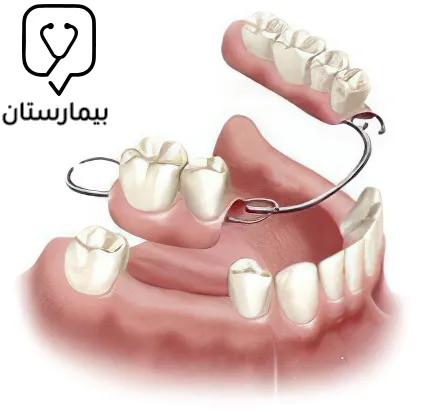
في حال كان السن المفقود دائماً أو لبنياً ولم يبزغ مكانه الدائم فيمكن التعويض عنه فيما بعد بـ جراحة زراعة الأسنان.
متى يكون تركيب حافظة المسافة للأسنان ضرورية؟
قد يحتاج الأطفال إلى حافظة مسافة للأسنان لعدة أسباب تشمل:
1. الفقد المبكر للأسنان المؤقتة
يمكن أن يحدث تسوس أسنان الطّفل بسهولة مما يؤدي أحياناً للحاجة إلى خلع الأسنان، تتشكل النخور على الضرس اللبني بشكل أكثر لأن الميناء يكون أكثر هشاشة من الأسنان الدائمة.
إذا كان لابد من خسارة السن بسبب التسوس الشديد، يتم وضع حافظة المسافة للأسنان لمنع اختلال المحاذاة أو الإزدحام مع تطور الأسنان الدائمة.
2. إصابات الأسنان
خلال المراحل المبكرة من الطفولة تكون إصابات الأسنان الأمامية في الفكين العلوي والسفلي عند الأطفال شائعة جداً، لذلك كثيراً ما تتم خسارة أسنان الطّفل الأمامية التي تضم القواطع والأنياب قبل أوانها.
إذا فقد طفلك أحد أسنانه الخلفية قبل الأوان بسبب الصدمة فإن الحافظة تساعد على منع اختلال المحاذاة ومنع الازدحام مع نمو الأسنان الدائمة.
ما هو التسلسل الزمني لبزوغ الأسنان عند الأطفال؟
- في عمر ستة أشهر إلى سنة واحدة يجب أن تبدأ الأسنان الأساسية للطفل بالظهور
- حوالي 3 سنوات من العمر يجب أن يكون لدى طفلك غالبية الأسنان اللبنية
- حوالي 6 سنوات يجب أن تبدأ أسنان طفلك في التساقط ويمكن أن يستمر هذا حتى حوالي سن 12
تميل الأسنان إلى التساقط حسب ترتيب نموها، إذا بدأت أسنان طفلك في التساقط مبكراً استشر طبيب الأسنان لمناقشة الحاجة المحتملة لجهاز حافظ المسافة، إذا كنت تبحث عن متخصص لتقييم طفلك يمكنك التواصل مع مركز بيمارستان لإرشادك إلى أمهر الأطباء.
كيفية العناية بحافظة المسافة للأسنان
- تجنب الحلوى اللزجة والوجبات الخفيفة الفاكهة والتوفي والعلكة
- العناية بصحة الأسنان بما في ذلك تنظيف الأسنان بالفرشاة يومياً والخيط
- الزيارات الدورية لعيادة طب الأسنان فترة وجود حافظة المكان في الفم كل 6 أشهر أو أكثر حسب تعليمات الطبيب
- ساعد طفلك على تجنب دفع الجهاز باستخدام الأصابع أو اللسان
وتذكر دائماً مراجعة طبيب الاسنان إذا بدأت أسنان طفلك في السقوط في وقت مبكر، إذا كان طفلك يحتاج إلى حافظة المسافة للأسنان ولم تركب فمن الأرجح أنه سيحتاج إلى علاج تقويم الاسنان عندما تبزغ جميع أسنانه الدائمة لاحقاً.
المصادر
